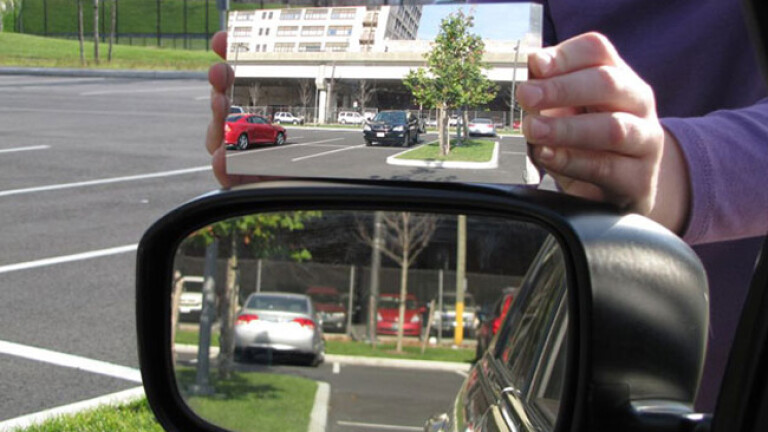
An exterior rear-view mirror that its creator claims eliminates the driver’s ‘blind spot’ has received a U.S. patent. The subtly curved mirror, invented by Drexel University mathematics professor Dr. R. Andrew Hicks, dramatically increases the driver’s field of view with minimal distortion.
Conventional (flat) mirrors on a car’s driver’s side provide an accurate sense of the distance to vehicles behind, but have a narrow field of view, creating the notorious blind spot. A curved mirror will increase the field of vision and eliminate the blind spot, but the consequent distortion makes objects appear smaller and further away than they really are.
Professor Hicks’ driver’s side mirror has a field of view of about 45 degrees, compared to 15 to 17 degrees for a normal mirror, but distortion of shapes and straight lines is barely detectable. This is because Hicks designed his mirror using a mathematical algorithm that precisely controls the angle of light bouncing off it.
“Imagine the mirror’s surface is made of many smaller mirrors turned to different angles, like a disco ball,” Hicks says. “The algorithm is a set of calculations to manipulate the direction of each face of the metaphorical disco ball so that each ray of light bouncing off the mirror shows the driver a wide, but not-too-distorted, picture of the scene behind them.”
Hicks notes that, in reality, the mirror does not look like a disco ball up close, adding there has been expressions of interest from investors and manufacturers keen to license and produce the mirror.

COMMENTS